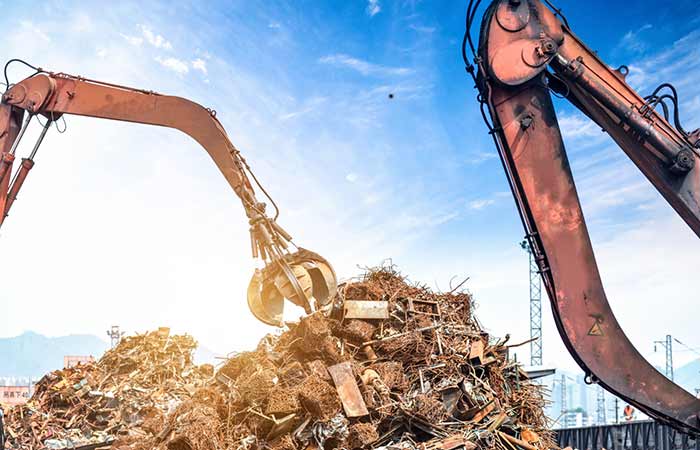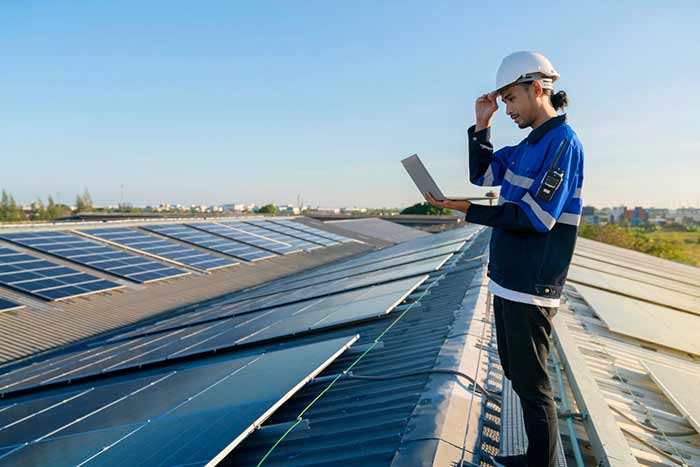Most Sustainable & Energy-Efficient Building Materials to Build a Home

The demand for energy-efficient homes has been rising for the past few years – thanks to the awareness people have gotten regarding climate change. It pushes engineers and designers to use energy efficient building materials and techniques to construct homes.
These are the homes that use less energy to run or function. You can heat or cool them and use appliances with less power, resulting in less consumption of fossil fuels. To achieve this goal, industry experts must develop a detailed plan for constructing, designing, and operating stages.
[ez-toc]Why Should Homes Be Energy-Efficient?

Apart from reasons like saving the environment or net zero carbon emission (we will touch on that later), one of the top reasons people prefer energy-efficient homes is that they are cost-effective in the long run. Since they have an energy-efficient building design, they do not need considerable resources to function, which lowers the homeowner’s spending.
Secondly, it does not harm the environment and keeps it caron-free. Since it lowers the greenhouse effect and provides a sustainable living space, it is the future of smart cities.
In fact, according to Statista, the Netherlands got the highest energy efficiency score (22.5 out of 25) of buildings in 2022, while the US got 17. This survey was based on several metrics, like,
- Standards for appliances and equipment
- Building disclosure and rating
- Labeling of appliances and equipment
- Building’s energy efficiency
- Construction regulations
- Refit regulations
Let’s take a brief look at materials that are used to construct energy-saving homes.
List of Top 5 Energy Efficient Building Materials To Build A Home
1. Insulating Concrete Forms (IFCs)

It is not a new technology; instead, people have discovered it recently again due to its energy-saving properties. In fact, it’s not the material itself. Insulating Concrete Forms is a process of filling up concrete with 2 walls of insulation material, like a sandwich. It is proven to be highly effective against heat compared to regular wood.
Advantages and Properties:
- Excellent for low-maintenance homes as it is extremely durable, long-lasting, and does not require frequent look-after.
- It can be molded into various designs, allowing designers or constructors to make aesthetic architectural plans.
- Disaster and moisture resistance properties make it the most preferred home construction method.
- Due to the unmatched energy efficiency and durability quality, it attracts environmentally conscious buyers and has higher property value.
2. Recycled Steel

Recycled steel is the best way to prevent cutting down trees for constructing houses. It is truly sustainable and long-lasting material because it is the only material that can be easily reused 100% in constructing any steel building. Its magnetic properties allow it to be separated from the scrap to use again.
Advantages and Properties:
- It uses less energy and emits less CO2, making legit energy-efficient houses.
- Fire resistance, high tensile strength, and the ability to be seamlessly integrated with green technologies like rainwater harvesting systems and solar panels make them the first choice.
- It can regulate temperatures because of its high conductivity and good thermal performance.
3. Bamboo
It may sound a bit old, but choosing bamboo over other highly processed building materials is the most environmentally-friendly choice. It is the fastest-growing grass that can be easily stacked to make it hardened like wood and is a renewable resource.
Fun Fact: Compared to hardwood trees, Bamboo produced 35% more oxygen and 3 times firmer.
Advantages and Properties
- It has a low carbon footprint and has lightweight, making it ideal for homes.
- It has a unique natural and aesthetic appeal that makes it a preferable choice for people who love homes with an organic vibe.
- Acting as a natural insulator, it can maintain average temperatures.
- Due to the excessive harvesting and fast growth, it is available all year around, making it a cheap and energy-efficient solution.
4. Cool Roofing

It functions on a simple physics formula: light colors reflect light or heat, and dark colors absorb.
Cool Roof, as the name suggests, keeps the home cool by reflecting a lot of light and preventing the heat from reaching indoors. It eventually decreases the electricity bills because fewer air conditioners and room coolers are used in such homes.
It does not need any kind of renovation or remodeling. Placing highly reflective materials such as sheet covering, paint, tiles, or coverings can do the job best.
Advantages and Properties
- Lowers the urban heat island effect in tall buildings.
- Keep indoors cool and calm.
- Highly durable and weather-resistant qualities make it long-lasting.
- Because of high solar reflectance, it is the most energy efficient building material.
- It makes the environment sustainable because of less emission of greenhouse gases.
5. Recycled Wood
The most effective hack to save the environment is recycling. So why not incorporate it into the home building?
According to experts, wood fiber and recycled plastic have more strength and durability as compared to traditionally sourced lumber because of interlocking fiber. Plus, since it is not toxic and harmful to the environment, it is a suitable replacement for many other building materials.
Advantages and Properties
- It ensures durability and saves money as it is highly resistant
- It is 100% recyclable, reducing the carbon footprint
- Since it absorbs less heat, it cuts down the energy consumption
- It can be transformed into anything and is adaptable to any style, color, and finish you want.
- It cannot rot, decay or attract insects easily, making it safe
Conclusion
In a nutshell, homeowners want to build their homes with energy efficient building materials because of their environmental benefits. Opting for recycled stuff like wood, plastics, and steel drastically cuts the cost and makes the home feel cool in summer. Insulating concrete forms and cool roofing lowers the need for ACs and room coolers.
FAQ’s
Insulated concrete forms (ICFs) are widely regarded as the most energy-efficient home building material. These hollow foam blocks or panels, filled with concrete, excel at insulation and airtightness. Their exceptional thermal properties contribute to a stable indoor temperature, significantly reducing the demand for heating and cooling, ultimately leading to decreased energy consumption.
As mentioned earlier, insulated concrete forms (ICFs) are widely regarded as the most energy efficient building material. However, other materials like structural insulated panels (SIPs), insulated metal panels (IMPs), and some types of advanced masonry and timber construction can also be highly energy-efficient choices.
Building components or products aimed at curbing energy consumption within structures are referred to as energy-efficient materials. These materials possess specific attributes that effectively diminish heat transfer, bolster insulation, and thereby improve overall thermal performance in buildings.
By playing a pivotal role in the creation of sustainable and environmentally friendly structures, energy-efficient materials have become indispensable in modern construction practices.
Energy-efficient buildings are carefully planned and built with the intention of optimizing energy consumption while ensuring a comfortable indoor environment. These structures utilize energy-efficient materials like ICFs, SIPs, double-glazed windows, effective insulation, energy-saving HVAC systems, and sustainable technologies. The incorporation of these elements helps minimize energy usage and reduces the overall environmental impact of the building.
The pinnacle of energy efficiency in homes is often attained through a skillful fusion of diverse energy-saving elements and materials. As mentioned earlier, a winning combination includes utilizing insulated concrete forms (ICFs) for walls, structural insulated panels (SIPs) for the roof, energy-efficient windows, appliances, LED lighting, and a meticulously designed HVAC system.
When these components harmoniously come together, they bestow a residence with unparalleled energy efficiency, elevating it to the forefront of sustainable and environmentally conscious living spaces.
Fiberglass and mineral wool are well-known for excellent thermal insulation. However, spray foam insulation has gained popularity for its airtight seal and high R-value, offering superior insulation. Energy efficiency also relies on proper design, orientation, climate, and efficient technologies, making a holistic approach essential for optimal results.

news via inbox
Sign up and never miss out on the latest news and updates at HighStuff



